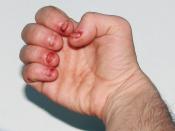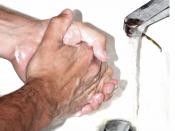"Psychopharmacology"ÃÂ In this video, the causes, effects, and treatments of psychopharmacology are discussed, with a particular emphasis on the disease known as "panic disorder."ÃÂ It is only one of the primary anxiety disorders; the others include agoraphobia, social phobia, simple phobia, obsessive-compulsive disorder, posttraumatic stress, generalized anxiety, and other anxiety disorders not specified. Panic disorder is also commonly referred to as having "panic attacks."ÃÂ About 2%-5% of the American population are victims of this disease, and it is not limited to one specific group"ÃÂit strikes even the most popular, happy people.
The symptoms associated with panic disorder are usually intense and dramatic, and they often require one to seek medical care. For some, the anxiety is more prevalent than for others. Some also say that the feelings of panic come from nowhere. When having an attack, victims say that they feel like they are having a heart attack, so it is associated with real physiological symptomentology.
Victims' lives change immediately; they are often scared to drive, to stay alone, to use an elevator, or sometimes, they are too afraid to even use the bathroom by themselves. They enter into the life of a recluse"ÃÂoften, it's a life described as "pure hell."ÃÂ Unlike in the old days, where doctors used to sedate or tranquilize the anxious, today there are many practical, as well as effective, treatments for panic disorder. Anxiolytic drugs, such as Xanax and Alprazolam are effective treatments, but they are often associated with a drug dependence syndrome; other alternative drugs that aren't associated with addiction can be used, but they may not be as clinically efficacious. Tricyclic antidepressants, like Imipramine, and other medications including Clonazepam, Desipramine, and Fluoxetine (to name a few) have also proved to be effective. Efficacy of a drug is determined by...


